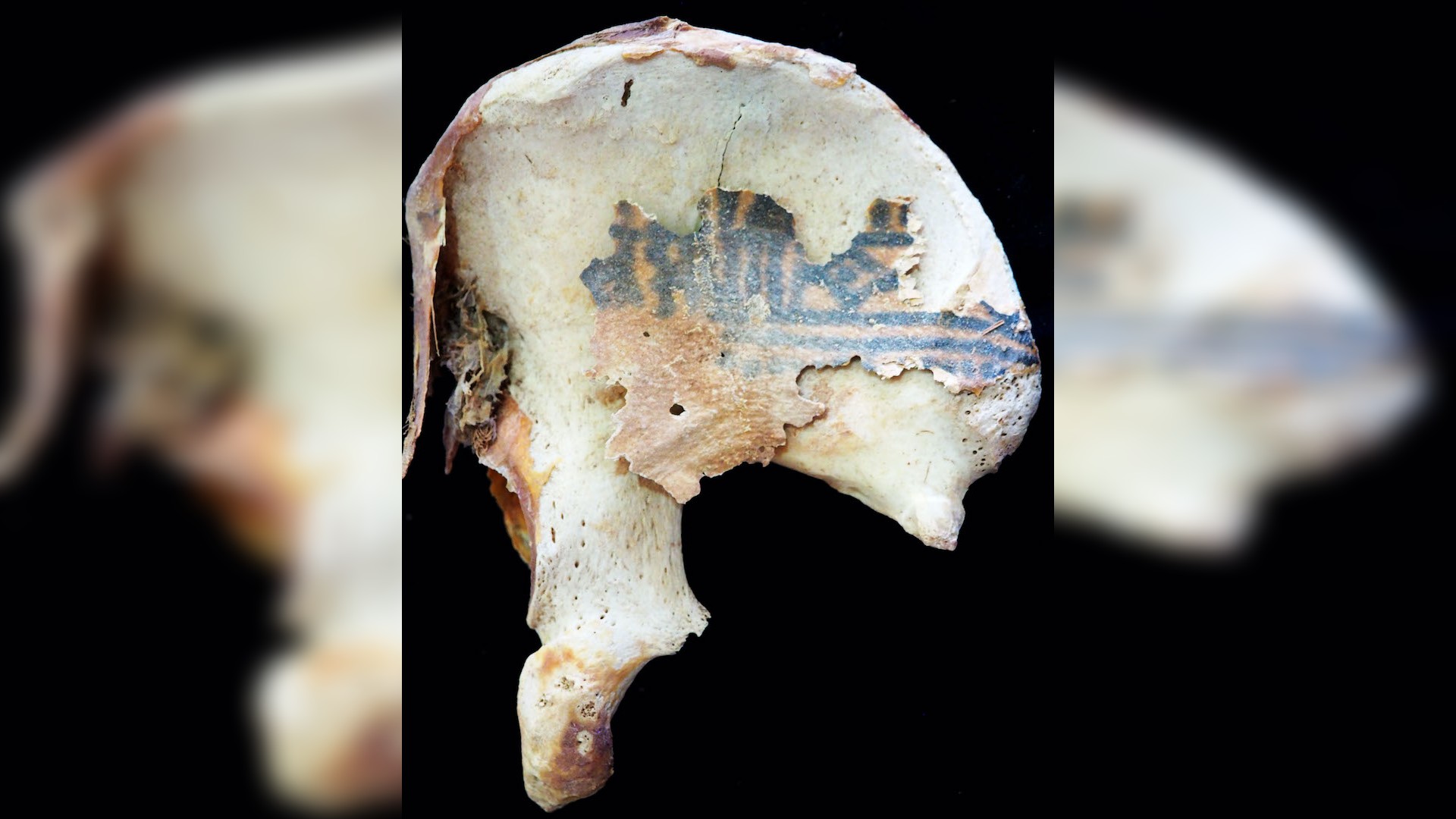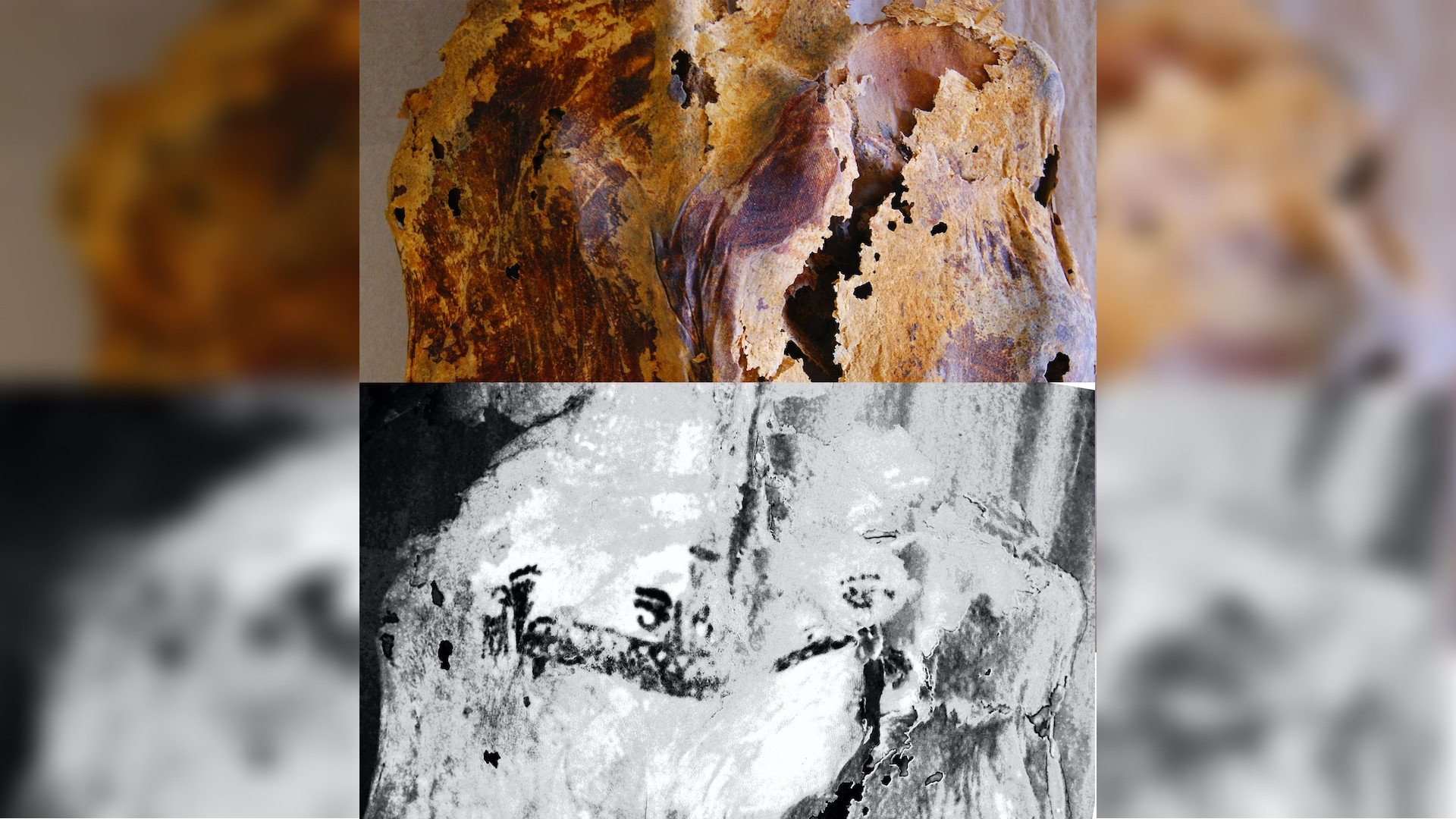Protective childbirth tattoos found on ancient Egyptian mummies
Some ancient Egyptian mothers got tattoos that were likely meant to protect them during childbirth and during the postpartum period, an analysis of their mummies reveals.
Lower back tattoos may seem like an early 21st century fad popularized by low-rise-jeans clad celebrities, but new archaeological evidence from Egyptian mummies shows the practice is actually more than three millennia old.
At the New Kingdom site of Deir el-Medina (1550 B.C. to 1070 B.C.), researchers Anne Austin and Marie-Lys Arnette have discovered that tattoos on ancient flesh and tattooed figurines from the site are likely connected with the ancient Egyptian god Bes, who protected women and children, particularly during childbirth. They published their findings last month in the Journal of Egyptian Archaeology.
Deir el-Medina lies on the western bank of the Nile, across from the archaeological site of Luxor. Beginning in 1922, around the same time that King Tut's tomb was found, the site was excavated by a French team. Known in the New Kingdom period as Set-Ma'at ("Place of Truth"), this was a planned community, a large neighborhood with rectangular gridded streets and housing for the workers responsible for building tombs for the Egyptian rulers. While the men would leave for days at a time to work on the tombs, women and children lived in the village of Deir el-Medina. An important feature of the site is the so-called Great Pit, an ancient dump full of pay stubs, receipts and letters on papyrus that have helped archaeologists better understand the lives of the common people.
Related: Ötzi the Iceman's tattoos may have been a primitive form of acupuncture
But nothing in the Great Pit mentions the practice of tattooing, so the discovery of at least six tattooed women at Deir el-Medina was surprising. "It can be rare and difficult to find evidence for tattoos because you need to find preserved and exposed skin," study lead author Anne Austin, a bioarchaeologist at the University of Missouri-St. Louis, told Live Science in an email. "Since we would never unwrap mummified people, our only chances of finding tattoos are when looters have left skin exposed and it is still present for us to see millennia after a person died."
The new evidence that Austin discovered came from two tombs that she and her team examined in 2019. Human remains from one tomb included a left hip bone of a middle-aged woman. On the preserved skin, patterns of dark black coloration were visible, creating an image that, if symmetrical, would have run along the woman's lower back. Just to the left of the horizontal lines of the tattoo is a depiction of Bes and a bowl, imagery related to ritual purification during the weeks after childbirth.
The second tattoo comes from a middle-aged woman discovered in a nearby tomb. In this case, infrared photography revealed a tattoo that is difficult to see with the naked eye. A reconstruction drawing of this tattoo reveals a wedjat, or Eye of Horus, and a possible image of Bes wearing a feathered crown; both images suggest that this tattoo was related to protection and healing. And the zigzag line pattern may represent a marsh, which ancient medical texts associated with cooling waters used to relieve pain from menstruation or childbirth, according to Austin.
Get the world’s most fascinating discoveries delivered straight to your inbox.
In addition, three clay figurines depicting women's bodies that were found at Deir el-Medina decades ago were reexamined by study co-author Marie-Lys Arnette, an Egyptologist at Johns Hopkins University in Baltimore, who suggested that they too show tattoos on the lower back and upper thighs that include depictions of Bes.
The researchers concluded in their paper that "when placed in context with New Kingdom artifacts and texts, these tattoos and representations of tattoos would have visually connected with imagery referencing women as sexual partners, pregnant, midwives, and mothers participating in the post-partum rituals used for protection of the mother and child."
Sonia Zakrzewski, a bioarchaeologist at the University of Southampton University in the U.K. who was not involved in the current study, told Live Science in an email that "the newly described tattoos are extremely intricate relative to earlier Egyptian tattoo practices," and that "images of pregnant women are extremely rare in Egyptian art." Because childbirth and fertility of the soil were linked in Egyptian thought, Zakrzewski suggested that "these tattoos are imprinting protective representations — including of gods — on their body, almost like the person has their own portable magical amulet with them."
Tattooing in Deir el-Medina is even more common than people realized, according to Austin, though it is unknown how widespread it may have been elsewhere in Egypt during that period. "I'm hopeful more scholars will find evidence of tattooing so that we can see if what is happening in this village is unique or part of a broader tradition in ancient Egypt that we simply haven't discovered yet," she said.

Kristina Killgrove is a staff writer at Live Science with a focus on archaeology and paleoanthropology news. Her articles have also appeared in venues such as Forbes, Smithsonian, and Mental Floss. Kristina holds a Ph.D. in biological anthropology and an M.A. in classical archaeology from the University of North Carolina, as well as a B.A. in Latin from the University of Virginia, and she was formerly a university professor and researcher. She has received awards from the Society for American Archaeology and the American Anthropological Association for her science writing.





